
11 minute read
Prepare and get organised with our bespoke planning form
from Emphasis Spring 2021
by PHA UK
Image courtesy of Royal Papworth Hospital
CTEPH procedures and us
Pulmonary endarterectomy and balloon pulmonary angioplasty help hundreds of patients with chronic thromboembolic pulmonary hypertension (CTEPH) every year. Here, three PHA UK members share their very different experiences of the procedures, and the journeys that carried them there. >>>
David Whittington is 77 and lives in Loughborough. He underwent pulmonary endarterectomy surgery in November last year.
My breathlessness began in 2018 and it was thought that it was a side effect of my blood pressure medication. But in November 2019 I experienced a near collapse due to low oxygen levels and my wife took me immediately to my GP, who arranged an emergency A&E admission to my local hospital in Leicester.
Various tests identified a pulmonary embolism close to the right side of my heart, causing it to dilate to three times its expected size due to the strain that it was under to circulate oxygenated blood.
I was treated with blood thinners and advised to isolate until I visited a respiratory specialist again. Whilst waiting, at the beginning of 2020 I became aware that my weight had increased by 16kg (due to water retention) and I ended up in hospital again, where I received an intravenous medicinal diarrhetic. At this point I was referred to Royal Papworth Hospital and just a couple of weeks later, the country went into its first lockdown. I was already isolating, and now I was shielding too.
A few months later, in September 2020, I visited Royal Papworth for a right heart catheterisation, which resulted in my diagnosis of CTEPH. I began medication and made a subsequent visit for a coronary angiogram in October, which showed no problems with cholesterol.
I had already been made aware that pulmonary endarterectomy surgery may be required, and on 6th October BBC2 broadcast an episode of ‘Surgeons: At the Edge of Life’ which showed this very operation being carried out. This contained a lot of detail and I found it very reassuring that the team had the experience and commitment.
Watching the programme reassured me that it would be the best course of action; therefore, I was prepared to proceed with the operation if it was to be suggested.
Shortly afterwards, it was. The operation was discussed in detail with me, and I was made aware of associated risks and how long it may be (nine hours). I was happy to complete the form giving my agreement for the treatment.
I am very fortunate to be supported by my family and friends, as well as a very caring church family who have remained in contact throughout. My own strength of faith also contributed to convince me that I had to trust the advice and co-operate with the doctors and medical staff with whom I had consultations.
Plus, I felt I had two choices – stay as I was and continue experiencing breathlessness, or accept the operation with at least a 93 per cent chance of success. I felt I had little option and I was much more relaxed about everything once the decision had been made.
I had the surgery on 20th November 2020 and it was a success. Unfortunately, due to COVID-19 lockdown restrictions and living 100 miles from Cambridge, I was unable to have any visitors.
Now, seven weeks after the operation, my breathing has markedly improved and I am able to walk up and down stairs again - whereas previously I was using a stair lift that had been installed when my mother was living with us.
I am feeling very positive that I will be able to resume swimming and jogging, as well as driving my 53-year-old MGC
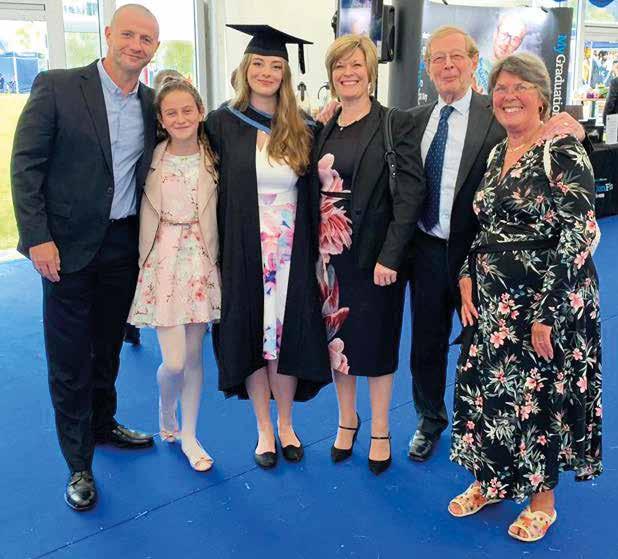
David (second from right) with family at his granddaughter's graduation
GT in the not-so-distant future.
I am also looking forward to attending church and resuming my governor duties at my local primary school. And - when COVID-19 restrictions allow - I’m looking forward to meeting up with the many people I haven’t seen for over a year.
I hope that anyone reading this might be inspired by the journey I have been on, most of which has been beyond my personal control!
Despite all the burdens placed upon NHS staff, the attention and treatment by every member of staff - from receptionists through to ward orderlies, consultants and surgeons - has been exceptional. I wanted or needed for nothing, and I cannot praise them highly enough.
Given all that has happened, I did my best to co-operate with all that was asked of me and I am sure that maintaining this attitude with the staff made the whole experience easier to tolerate.
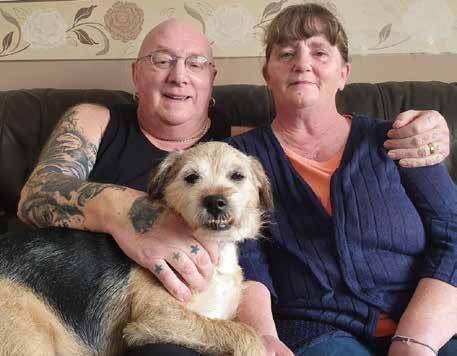
About pulmonary endarterectomy surgery
A pulmonary endarterectomy (also known as PEA or PTE) is a complex surgical operation in which the blood vessels of the lungs are cleared of clot and scar material.
Royal Papworth is the only centre in the UK that offers the surgery, and it has performed over 2000 operations since 1996. Not everyone with CTEPH will be suitable for this operation, and a number of additional investigations must be performed in order to assess the appropriateness of surgery and the level of risk involved.
Shelly with husband Phil and their dog Rambo
Shelly Rouney had her pulmonary endarterectomy filmed by the BBC for ‘Surgeons: At The Edge of Life’ and it was shown on primetime television in October last year. In an interview conducted in January, she reflects on the unusual experience and the health challenges she has faced with her husband.
My operation was in December 2019 so it was almost a year until it was shown on TV, and it was only then that my family realised how serious it was.
When I first got the call to ask if I would be happy with the filming, I said yes straight away, but I then started to wonder what I had done! It was daunting at first, but the film crew were absolutely brilliant, I couldn’t have asked for a better bunch. They were lovely.
They filmed in our home a few times before the operation and they were so understanding if I got upset or anything.
They followed my journey all the way through, filming me in hospital two or three times in the run-up to the surgery. They did want to film me again afterwards, to show my recovery, but COVID-19 put a stop to it. We had a video chat instead and I sent them photos.
I was happy with how it all turned out when I watched it on TV, but my husband Phil and I still cried all the way through. It was overwhelming, and to this day, I don’t think my mum has watched it.
Phil was interviewed for the programme too, and we had people recognise us out shopping, asking ‘was it you two on the telly?’
My operation was brought forward because I was diagnosed with breast cancer a few months after I was diagnosed with CTEPH. I was told I wouldn’t survive the mastectomy operation unless I had the pulmonary endarterectomy first, which is why I ended up having the surgery over Christmas. Two months later, I had my right breast removed.
I was in hospital for about two weeks for the endarterectomy and left on New Year’s Eve. >>>
Being in hospital on Christmas Day was odd, but the staff were so good. They even got us all presents.
Phil stayed with his nephew while I was in hospital as it was closer, but it was still 100 miles each way, so he only saw me in hospital a couple of times. It was hard being away from him so much.
Unbelievably, he was taken poorly himself whilst I was in hospital and the symptoms turned out to be cancer of the oesophagus. I don’t think a lot of people can believe what can happen in the space of a few months. But we have got each other through it all.
My recovery from the PTE went well. All the clots were cleared, but I do have right side heart failure. And I’m having a lot of problems as a result of the breast cancer.
But me and Phil stay positive together, knowing that I am going to live longer, whereas before it was very different. And Phil’s cancer is now in remission, so we know there are better times ahead.

Pictured here and on p17: Shelly's operation was shown on BBC2
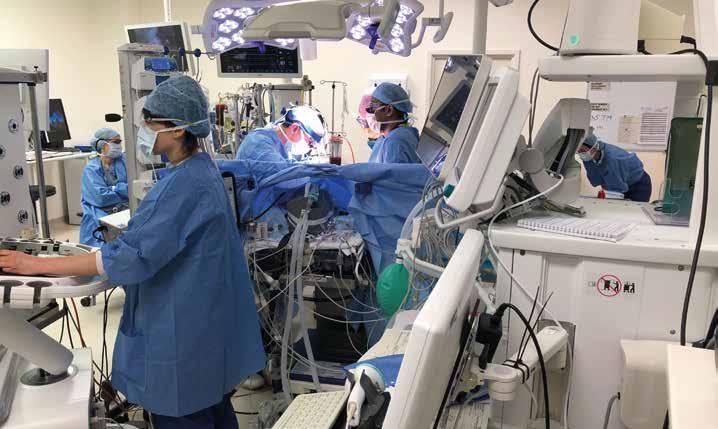

Dr David Jenkins
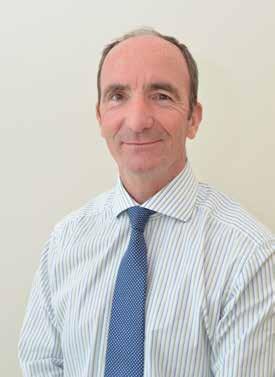
Shelly’s pulmonary endarterectomy was carried out by Dr David Jenkins, Clinical Director of Surgery at Royal Papworth Hospital. He told Emphasis: “The filming did not interfere with the operation. We are used to visitors in theatre and I have been filmed before. In addition, the documentary makers were very skilled and many of the cameras were remotely operated so the clinical team were not interrupted. I think the programme has helped [to raise awareness of pulmonary hypertension and the pulmonary endarterectomy surgery]. Many of our patients have seen it, and others have contacted us about the surgery subsequent to the programme being aired. The more awareness the better with a rare disease. It may also help raise awareness with other health professionals too.”
Former nurse Mel Lee is 63 and lives near Peterborough. She had a balloon pulmonary angioplasty procedure in 2019, following years of complex health problems culminating in a CTEPH diagnosis.
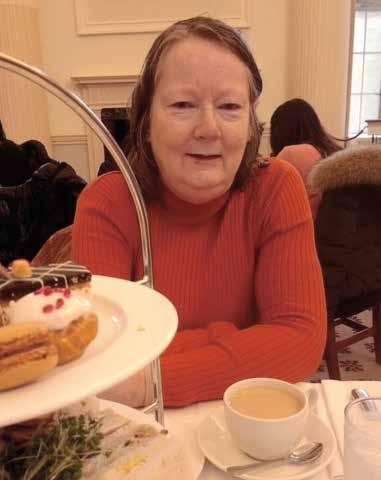
I had breast cancer in 2002 and uterine cancer in 2005 and then in 2007, I had a massive pulmonary embolism following a 50th birthday trip to South Africa.
Then in 2009 I had a further breast cancer diagnosis which resulted in mastectomy and implant. This was followed by a reconstruction in 2011. Unfortunately, that didn’t work, so I was having liposuction to replace the fat lost when I had a recurrence of the multiple bilateral pulmonary embolisms in September 2012. The doctors increased my warfarin target, but no other treatment was considered or advised at that time.
I began to get more breathless in 2015. I help with a lunch club and I started to find setting the tables difficult. I was getting dizzy, had palpitations and I was sweating in a circle around my head.
My ankles were swelling too, and I kept seeing my GP until finally I was referred to a respiratory consultant. By this point it was 2018 and I couldn’t walk further than ten yards without becoming breathless and dizzy. My extremities were very cold and when I came downstairs in the morning I had to rest before going to the kitchen for breakfast.
I was volunteering as a driver and befriending coordinator for a local charity at the time, and I had to stop driving which I loved as it gave me a reason to get out of the house.
After various tests I was finally diagnosed with CTEPH and given an urgent referral to a specialist centre. As a nurse, that felt really scary. I had never heard of CTEPH, although I had trained at a hospital where we did cardiothoracic surgery.
I had lots of further tests at Royal Papworth Hospital, and the diagnosis was explained properly to me. They also explained it to my sons, which was lovely.
But after the first trip to Papworth I came home, wrote my Will and organised my funeral as I couldn’t see there was a way out. So, when the angioplasty was first mentioned, quite early on, I was really happy that there was something that would be able to make me breathe much better.
I started medication and a heart catheter was repeated every three months until the pressures were low enough for me to have the procedure.
I remember when I was having the angioplasty my blood pressure suddenly went back to what it was before all of this. They managed to get the large web in my pulmonary artery and the two big ones in my lungs, but unfortunately the small vessels were unable to be fixed.
I went home the day after the angioplasty and felt better quite quickly. It was about three months afterwards that I realised I wasn’t having any palpitations or chest pain anymore. But I still can’t walk very far before becoming breathless. Having lived alone for many years I’ve got used to doing things and then having to sit down afterwards.
If anyone else is in the same position as I was a few years ago, struggling for a diagnosis, I would say keep going back to the doctor and insist on being referred to a specialist. My daughter will be doing a PhD in making diagnosis easier for CTEPH patients next year and I feel hugely proud that she might help others in my position.
Mel Lee
About balloon pulmonary angioplasty Balloon pulmonary angioplasty (BPA) has been available for five years and is a minimally invasive procedure that can be carried out when pulmonary endarterectomy is not an option. It is only offered at Royal Papworth Hospital. During the procedure, an interventional cardiologist inserts a very fine wire into blood vessels in the lungs and guides a tiny balloon into position. The balloon is inflated, to around the size of a pea, for a few seconds to push the blockage aside and restore blood flow to the lung tissue. The balloon is then deflated and removed. This can be repeated several times in different parts of the lung during a single treatment session.

